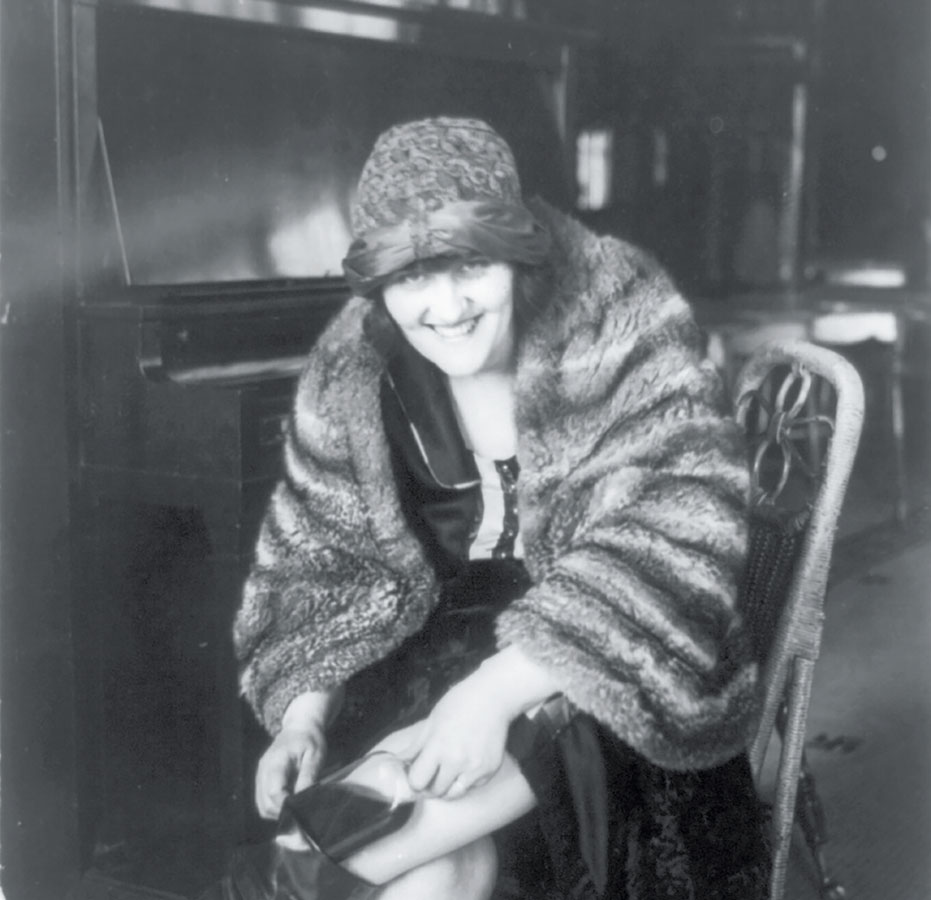Down by Law
Jazz rose out of the boozy backrooms of the Prohibition era.
Ah, Prohibition. The great misnomer. The wettest 13 years this country ever knew flowed under the 18th Amendment. And from 1920 to 1933 this country did live under Prohibition, in speakeasies and secret dives. And behind it, in back rooms and hotel suites and swamps. And alongside it, in makeshift rent parties and exclusive private clubs. And beyond it, on the decks of rum runners and booze cruises 12 miles offshore on the free-spirited and very wet seas.
That’s the irony of Prohibition. When we think of it, chances are the first thing that comes to mind is alcohol. A champagne cupola. A flask tucked into a garter belt or a hollowed Bible. A claptrap bathtub still. Apparently so did people who lived then. After the millions lost to a world war and a deadly flu pandemic, folks were in need of a stiff drink.
But cocktails weren’t the only taboo Americans consumed in copious quantities during Prohibition. The 1920s were also roaring, and so Prohibition also conjures a second, equally compelling set of associations of blaring trumpets and shimmering sequins.
“The spread of jazz can be directly attributed to Prohibition,” says Daniel Okrent, author of Last Call: The Rise and Fall of Prohibition. Indeed the connections we still make between jazz and hooch are so strong that we assume Prohibition came with its own soundtrack.
“Jazz lived in a world of drinking,” says music historian Michael McGerr. Prohibition coincided with a time of great social flux and widespread affluence, when leisure, including music, was shifting from a largely at-home, private experience into a purchasable and public commodity, McGerr noted in a recent radio interview. The invention of radio, the phonograph, records and the proliferation of nightclubs all formed an expanding market whose purpose was “selling excitement.”
As a new form dominated by African American men, jazz offered a double shot of what music historian David Brent Johnson calls, “the mark of transgression.” Bruce Raeburn, curator of the Hogan Jazz Archive at Tulane University, offers a decidedly bolder appraisal: “Jazz was considered whorehouse music.”
However, attitudes towards jazz weren’t uniform and Prohibition seems to have found a way to cash in on the spectrum. While white reactionaries dubbed jazz “jungle music” and saw it as a primitive expression of sexual desire, McGerr notes that others perceived jazz as distinctly modern and progressive, the new music of an increasingly urban, industrial America. In an era that saw heightened racial tensions—the rise of eugenics, Ku Klux Klan membership and immigrant backlash—speakeasy owners, if only in the pursuit of a dollar, often daringly pushed in the opposite direction, exploiting jazz as a forbidden fruit while simultaneously crossing racial boundaries. Jazz orchestras were among the first integrated musical acts. So too were their audiences, giving rise to the term “black and tan clubs” where cocktails weren’t the only thing being mixed. Duke Ellington captured the allure of breaking that taboo in the sauntering, come-hither horn sounds of his late 1920s release “Black and Tan Fantasy.”
Given the sheer number of drinking joints during Prohibition, alcohol in itself wasn’t enough for a club to remain competitive. As the music of the young, jazz was a serious draw, and the fact that it was dance music was key, allowing speakeasy owners to capitalize on another unintended demographic of Prohibition: women drinkers. Long barred from public saloons, many younger women, including those from the highest circles, flourished in the private, intimate confines offered by illegal venues. Much to the consternation of an older, sterner, whale-boned generation who’d campaigned tirelessly for both temperance and suffrage, freshly enfranchised and bobbed flappers flaunted higher hemlines and pressed the limits of their newfound freedoms in the secret, beyond-the-law spaces created by Prohibition.
Suddenly clandestine club owners were having to carve out discrete spots for “powder rooms.” For the first time, numbers of women drank and smoked alongside men, moving unabashedly to hit dances like the Shimmy, the Black Bottom, the Bunny Hug or the Charleston and the Bee’s Knees—the last two of which also shared names with popular cocktails of the era, evidence of the constant, profitable dynamic between music and alcohol during Prohibition. What ensued was like a life cycle of fructus prohibitum: The alcohol paid for the music which inspired the dancing which allowed for flirting which prompted another round. As McGerr notes, “Alcohol lubricated the vice machine.” Had the government only found a way to tax those profits, the 18th Amendment might never have ended.




